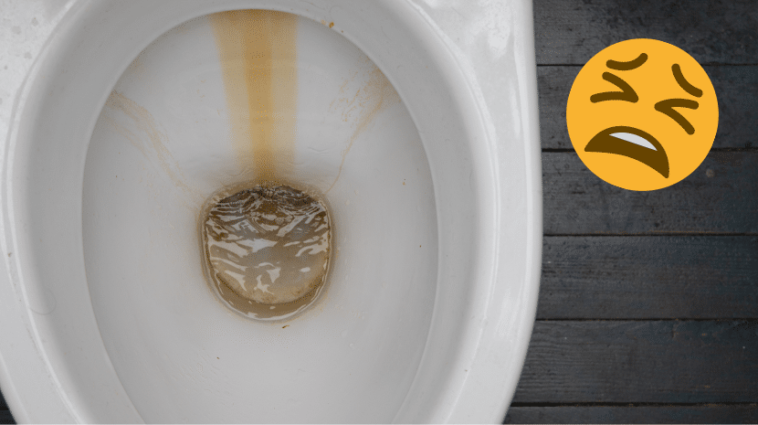Toilet maintenance is never a pleasant household task. Also, we sometimes tend to neglect this cleaning, even if it means letting limescale stains settle in the little corner. And when you’re unlucky, you can also see particularly unsightly traces of rust accumulating, quickly becoming very difficult to remove. Fortunately, there are many tips and techniques for getting rid of rust stains in toilets effectively, without having to use harsh chemicals. Find out how to clean the toilet to remove rust from the bowl.
With these environmentally friendly and/or inexpensive grandmother’s tips and tricks, you no longer need hydrochloric acid or bleach to find impeccable and healthy toilets. You will be able to strip the ceramic without damaging it and without breaking the bank.
1) Lemon juice to remove rust from toilets
In addition to refreshing the toilets thanks to its citrus smell and providing antibacterial and antiseptic properties to sanitize toiletslemon juice helps remove rust stains very effectively. Simply pour it onto the areas to be treated, leave for 30 minutes and scrub with a brush. Does the dirt resist? Make a mixture of lemon and salt, then leave to act for 30 minutes before rubbing gently. Be careful not to scrub too hard to avoid damaging the bowl or the bottom of the toilet. You can also cut a lemon in half, sprinkle baking soda on the flesh and use that as a sponge to scrub the stains.
2) Vinegar against ferruginous water stains
Rich in anti-limescale and antimicrobial acetic acid, white vinegar removes dirt in no time. He is very useful for descaling, stain removal, deodorizing and disinfecting the toilet in a single gesture, all while eliminating rust. Simply use it pure, hot if stubborn stains are resistant and following the same steps as for lemon.
3) Baking soda to remove rust stains on toilet enamel
Sanitizer, descaler and deodorizerbaking soda (also known as sodium bicarbonate) is essential for cleaning toilets. Generally, it is combined with vinegar to detach by mechanical action. To do this, sprinkle this white powder on the dirt, then pour or spray white vinegar on top. Then, leave it to act for a good quarter of an hour before scrubbing with a brush and flushing the toilet. You can also mix it with lemon juice and apply this paste to the stained areas before covering with cling film to keep the cleaning product moist. All you have to do is let it act, rub and rinse.
Good to know: If you don’t have baking soda, try replacing it with fine salt or lemon salt, always for a gentle abrasive effect without scratching. Citric acid diluted in water can also work. Finally, you can also scrape each rust stain with a previously wetted pumice stone. Brown deposits cannot resist it!
4) Coke to remove rusty stains
To remove rust stains (and for many other household uses), you can rely on this very sour soda ! To do this, simply turn off the water supply, pour a bottle into the toilet water tray and leave it overnight. The next day, you can reactivate the water and flush the toilet. Scrub the residue on the bottom of the bowl as well as the deposits on the rest of the surface of the cabinets using a brush to complete the cleaning.
5) Cream of tartar against toilet rust
Cream of tartar is a very powerful anti-rust. It can be sprinkled on rusty areas, then scrubbed with a moistened brush to remove rust in the toilet, bathtub or sink. This product can also be mixed with water to form a thick paste and left to act for a while under cling film to keep the mixture moist and active. Then scrub gently and rinse well.
6) Oxalic acid for rust-free cabinets
This product is most commonly used to renovate wood and marble or whiten textiles and leather. However, it can also be used to remove rust in the small corner. To do this, wear gloves and protective glasses, then ventilate the room if possible (or at least leave it well open). Then dilute 10 ml of these colorless crystals in 90 ml of water and pour it all on the rusting toilets. Finally, use an old toothbrush to scrub hard-to-reach areas and the rough part of a sponge for others.
How to prevent rust from forming in toilets?
The appearance of rust occurs when iron and oxygen are in contact with water. This then causes the formation of iron oxide. It is therefore relatively difficult to avoid yellowish stains in the toilet bowl. However, we can take some preventive measures.
By cleaning your toilet regularly, you can, for example, prevent the buildup of minerals and rust stains in the bowl. To do this, give a brush dailyor even several times a day. Moreover, clean the toilet about every two days with mild household products to prevent the appearance of stains. Vinegar or baking soda are very good choices here. Conversely, avoid abrasive cleaning products which can damage the toilet surface. This can in fact encourage the accumulation of minerals and the formation of rust stains on damaged enamel.
If the problem is out of control despite these preventive maintenance actions, you can also consider installing a water filtration system or a water softener.


